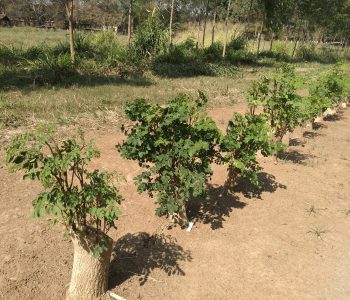Moringa as a Potential Forage Alternative for Ruminants During Drought
Researchers from the Institute of Animal Science Highlight the Positive Characteristics and Productive Potential of the Plant
Drought conditions can significantly impact agricultural production, particularly in regions where livestock rely on consistent forage availability. In response to the challenges posed by prolonged dry periods, researchers are exploring alternative plant species that can provide a reliable source of nutrition for livestock. Moringa oleifera, a hardy and resilient plant, is emerging as a promising option for sustaining livestock feed during droughts.
Nutritional and Environmental Benefits of Moringa
Moringa offers a range of nutritional benefits that make it an attractive forage alternative. The plant is rich in proteins, vitamins, and minerals, with its leaves and seeds containing high levels of essential nutrients such as beta-carotene, vitamin C, and crude protein. These nutritional properties can enhance the overall health and productivity of livestock, contributing to better quality animal products.
In addition to its nutritional value, moringa has environmental advantages. The plant’s oil exhibits antimicrobial properties, which can reduce the presence of harmful bacteria in the gastrointestinal tracts of animals. Moreover, feeding moringa to ruminants has been associated with a reduction in greenhouse gas emissions, such as methane, thereby contributing to a lower environmental footprint in livestock farming.
Considerations for Cultivating and Managing Moringa
While moringa is a resilient and drought-tolerant plant, certain management practices are essential to maximize its benefits as forage. One challenge in cultivating moringa is the potential for pest attacks, particularly by leaf-cutting ants. Effective pest control measures are necessary, especially during the establishment phase of the plant.
Another important consideration is the management of the plant’s growth, particularly the height at which it is harvested. Maintaining a balanced stem-to-leaf ratio is crucial for ensuring the digestibility and nutritional quality of the forage. Harvesting moringa at an optimal height can help achieve this balance, leading to better outcomes when the plant is used as silage or direct feed.
General Recommendations for Moringa Cultivation
Moringa can be propagated easily from seeds and requires minimal care, making it suitable for regions with limited resources. The plant can be cultivated at various densities depending on the desired yield and management capabilities. While higher densities can increase overall forage production, more spaced-out planting may facilitate easier management and maintenance.
For optimal growth and forage quality, it is recommended to start the planting process using controlled methods, such as seed germination in tubes, before transplanting to the field. This approach allows for better control over the initial growth stages and helps mitigate challenges such as weed competition and pest infestations.
Conclusions
Moringa oleifera presents a viable option for livestock farmers seeking alternative forage sources during drought conditions. Its nutritional benefits, coupled with its resilience to harsh environments, make it a valuable addition to sustainable livestock farming practices. However, successful cultivation and use of moringa as forage require careful management of pest control, plant growth, and nutrient replenishment to ensure the best outcomes for both livestock and the environment.
Source: Instituto de Zootecnia
